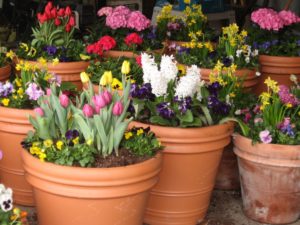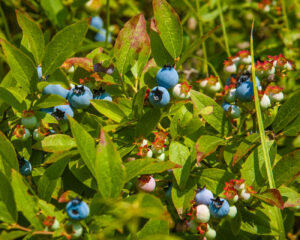
10 Steps to Picking the Best Plant in the Nursery for Your Home
Bringing home a new plant can be an exciting addition to any household, but selecting the right one can be a daunting task. With so many beautiful and diverse options available in nurseries, it’s essential to choose a plant that suits your home environment and matches your level of gardening expertise. In this blog post, we’ll guide you through ten simple steps to help you pick the best plant from the nursery for your home, ensuring a thriving and aesthetically pleasing addition to your space.
Step 1: Assess Your Space and Lighting
Before heading to the nursery, examine the space where you intend to place the plant. Take note of the lighting conditions, whether it’s bright and sunny, partially shaded, or low-light. Different plants have distinct light requirements, so understanding your space’s lighting will help you narrow down your options.
Need more help assessing the lighting in your yard or home? Check out our blog post explaining how to accurately assess the lighting in your area even in New England’s ever changing seasons.
Step 2: Determine Your Gardening Experience
Consider your level of gardening experience when choosing a plant. If you’re a beginner, opt for low-maintenance plants that are more forgiving and require less attention. On the other hand, if you have experience caring for plants, you might be up for a more challenging and rewarding plant species. If you are looking for something fun but challenging for your yard we recommend a blueberry bush for those looking for a rewarding challenge. Make sure to check the ph balance of the soil in your home before making any purchases. Not sure how to do that? Give us a call and we can help you figure out plantings for your home this season.
Step 3: Choose a Suitable Size
Be mindful of the available space in your home. Large plants can be stunning focal points, but they require more room to grow and thrive. Smaller plants or compact varieties are ideal for limited spaces or as tabletop decorations.
Step 4: Consider Air Quality and Health Benefits
Some plants not only add beauty to your home but also improve indoor air quality by purifying the air. Spider plants, snake plants, and peace lilies are popular choices known for their air-purifying properties.
Step 5: Research Plant Types
Before visiting the nursery, research various plant types that align with your preferences and requirements. Take into account factors like growth patterns, water needs, and pet-friendliness to find a plant that suits your lifestyle.

Step 6: Inspect the Leaves and Stems
When at the nursery, carefully examine the plant’s leaves and stems for any signs of discoloration, wilting, pests, or damage. A healthy plant should have vibrant, uniform leaves with no yellowing or browning.
Step 7: Check the Roots
Gently remove the plant from its pot (if allowed) to inspect the roots. A healthy plant should have white, firm roots and be well-established in the soil. Avoid plants with an excessive amount of brown, mushy, or slimy roots, as they may indicate poor health.
Step 8: Examine for Pests
Make sure to check the plant for any signs of pests or diseases, such as webs, holes, or unusual spots. Pests can quickly spread to other plants in your home and cause significant damage. If you notice little white dots, these are usually aphids which are tiny spiders that eat away at plants, same with little bit marks or any irregular notches on your leaves. These can be very clear indications a plant has some unwelcome guests.
Pro tip: REMEMBER ALWAYS To quarantine any plants you are bringing into your home or garden. Plants should spend at least a month isolated from your other plants to ensure that any issues that may have been hidden previously arise without collateral damage. It may seem a little silly at first but you will be thankful to avoid any disease or pests wreaking havoc on all of the plants you have spent so much time, effort and money on.
Step 9: Inquire About Care Instructions
Don’t hesitate to ask the nursery staff for care instructions and specific tips for the plant you’re interested in. Understanding its needs for watering, sunlight, and fertilizing will help you provide the best possible care. Remember to ask about plant temperaments as well, some plants may appear sluggish or even dead when they are really just thirsty or too hot. Plants are like people and all have different needs and responses to different levels of care, so dont let the tired looking plant deter you if you find it alluring. It may just need some love.
Step 10: Trust Your Instincts
Lastly, trust your gut feeling. If a particular plant catches your eye and you feel a connection, go for it! Your intuition can often lead you to the perfect plant that fits well with your home and personal style. After all, you know your style best and understand what responsibilities you are ready to take on. 
Selecting the best plant for your home doesn’t have to be overwhelming. By following these ten steps, you’ll be well-prepared to choose a healthy and suitable plant that will thrive in your living space. Remember to assess your home’s lighting, consider your gardening experience, research plant types, and inspect the leaves, stems, and roots before making your final decision. A carefully chosen plant will not only enhance the aesthetics of your home but also provide a sense of fulfillment as you watch it flourish under your care.
If you need help figuring out placement, specifications or picking plants in general, give us a call at 603-864-8646 to talk to an expert about plantings for your area.




